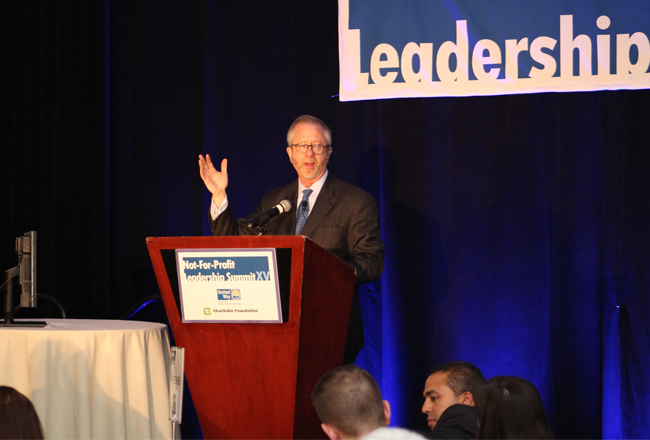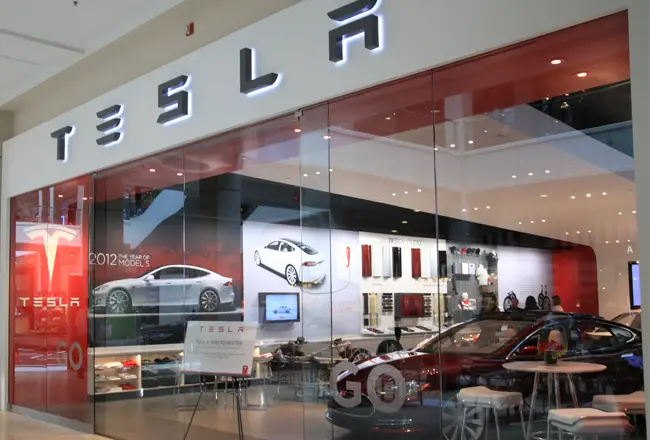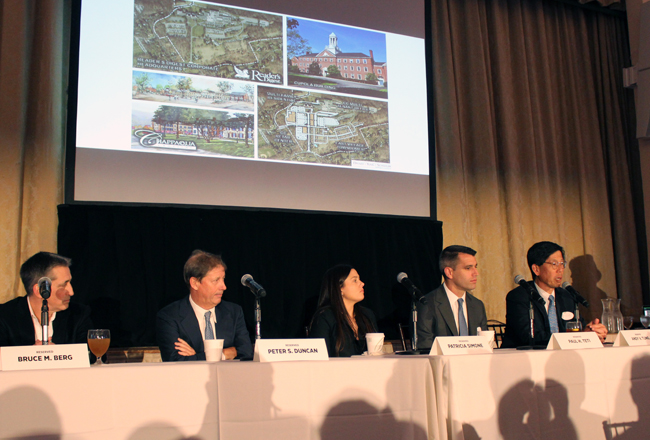Public trust in almost every public institution is down in the U.S., but nonprofits have managed to actually increase their public trust. That doesn”™t mean, however, that directors of nonprofit organizations should be celebrating.

That was part of the message delivered at a nonprofit summit by David Birdsell, dean and professor at the Austin W. Marxe School of Public and International Affairs at Baruch College in Manhattan. He addressed a crowded ballroom at the DoubleTree Hotel in Tarrytown as keynote speaker for the annual United Way of Westchester and Putnam Not-for-Profit Leadership Summit. The May 1 event included more than 600 people representing the nonprofit industry in Westchester.
Birdsell ran through a series of statistics and studies that he said help explain “some of the gulfs we see in the nation today” and give “a broader sense of why those things might lead to declining trusts in public institutions.”
Trust in government?
For 60 years, Gallup has surveyed people on the question: Do you trust government to do the right thing all the time, most of the time, some of the time or none of the time? Today, only 18 percent of people say they trust government all or most of the time, down from a high point near 80 percent during Lyndon B. Johnson”™s term as president in the 1960s.
The only institutions with net favorable ratings in the last Gallup poll were the military, small businesses and the police. Every other institution is “underwater,” as Birdsell put it. That includes organized religion, the Supreme Court, banks, the media and, at the bottom, Congress.
Yet trust in nonprofits or non-governmental organizations is actually going up, Birdsell said. Citing the Edelman Trust Barometer annual survey, he showed that 57 percent of people in the U.S. trust NGOs, up 5 percent from the previous year”™s surveys.
Regardless, Birdsell argued that even if nonprofits have been shielded from the decline in overall public trust, the numbers for other institutions should still concern them.
“Think about the partnerships you have to craft with government,” he said. “Nationwide, the average percentage of a social service nonprofit”™s income that comes from government contracts is 85 percent. If government can”™t get itself together to get you that 85 percent, you”™ve got a very serious problem.”
Populist president
To help explain some of that lost trust, Birdsell first cited average spending power in the country. More than 66 percent of people in the U.S. have experienced, in effect, net income declines since 1990, he said, citing data from the Brookings Institution”™s Hamilton Project.
“Now if you”™re falling into one of these economic brackets and you”™ve seen your government fail you over the course of 20 years and you don”™t have the institutional partner that steps up and says your problems are the problems we should be listening to, how do you feel about government? The answer is, not so well,” Birdsell said.
That can help explain how an outsider, populist candidate such as Donald Trump won the presidency, as well as how trust in all institutions has declined. Birdsell, though, was clear he wasn”™t there to make a political statement but rather provide context for what he described as an existential threat for nonprofits.
“You have a partner who is in desperate shape,” he said. “What can you do?”
Birdsell said nonprofits will have to work to increase accountability and transparency and “let people know that institutions are necessary to get things done.” Beyond that, he emphasized a need for nonprofits to make sure their services are as inclusive as possible.
“I think that many of us in the service arena, dedicated to lives of inclusiveness and helping, have made the mistake of not looking behind us toward those who we believe not to have been in our immediate targets for inclusion,” Birdsell said. “We are going to have to speak the language for 360-degree inclusion.”






















